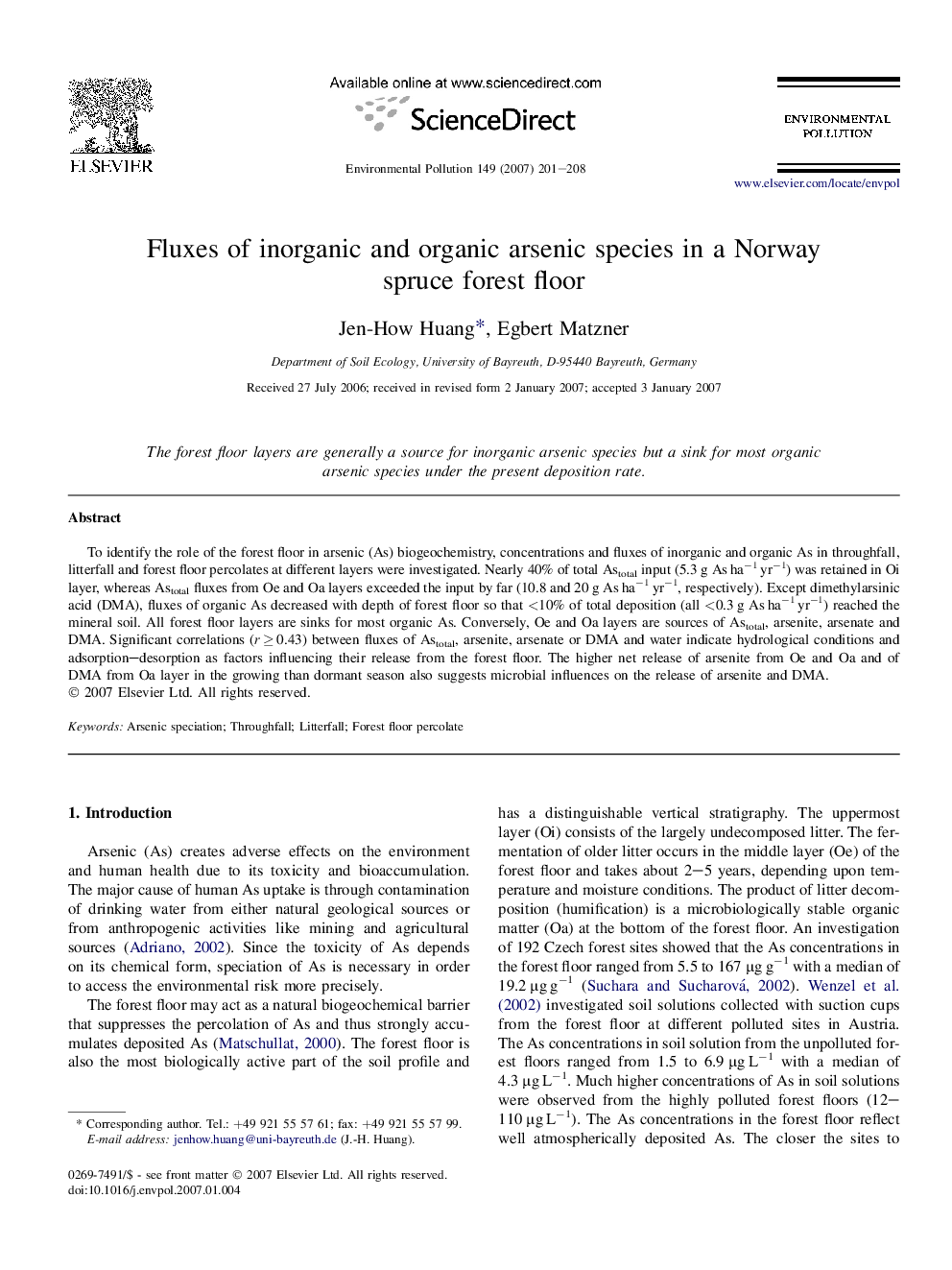| Article ID | Journal | Published Year | Pages | File Type |
|---|---|---|---|---|
| 4427457 | Environmental Pollution | 2007 | 8 Pages |
To identify the role of the forest floor in arsenic (As) biogeochemistry, concentrations and fluxes of inorganic and organic As in throughfall, litterfall and forest floor percolates at different layers were investigated. Nearly 40% of total Astotal input (5.3 g As ha−1 yr−1) was retained in Oi layer, whereas Astotal fluxes from Oe and Oa layers exceeded the input by far (10.8 and 20 g As ha−1 yr−1, respectively). Except dimethylarsinic acid (DMA), fluxes of organic As decreased with depth of forest floor so that <10% of total deposition (all <0.3 g As ha−1 yr−1) reached the mineral soil. All forest floor layers are sinks for most organic As. Conversely, Oe and Oa layers are sources of Astotal, arsenite, arsenate and DMA. Significant correlations (r ≥ 0.43) between fluxes of Astotal, arsenite, arsenate or DMA and water indicate hydrological conditions and adsorption–desorption as factors influencing their release from the forest floor. The higher net release of arsenite from Oe and Oa and of DMA from Oa layer in the growing than dormant season also suggests microbial influences on the release of arsenite and DMA.
